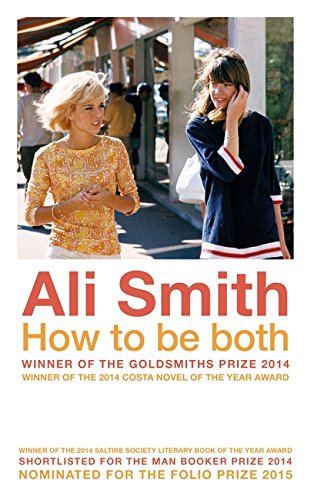 In Ali Smith’s novel How To Be Both, anything, it seems, is possible. Time shifts and slides, a girl enacts rituals to bring her dead mother back from the grave and a 15th century Italian painter springs back into being. On one level a story exploring grief, and the ways we seek to make sense of it, it hides a far larger tale within itself, split deftly into two halves.
In Ali Smith’s novel How To Be Both, anything, it seems, is possible. Time shifts and slides, a girl enacts rituals to bring her dead mother back from the grave and a 15th century Italian painter springs back into being. On one level a story exploring grief, and the ways we seek to make sense of it, it hides a far larger tale within itself, split deftly into two halves.
In one segment, George, the afore-mentioned bereaved teenager, grapples with the fluidity of being both here and then as she recalls her mother with such intensity that time loses it boundaries. She pours over aspects of her mother’s beliefs, including her passion for equality and justice, to the extent that George feels compelled to watch underage porn in an effort to acknowledge the suffering of the girls being abused.
She also takes to repeatedly visiting a painting by Renaissance painter Francescho del Cossa, whose frescos resulted in George’s mother sweeping George and her brother off on an impromptu flit to Italy in the months before she died.Midway through George’s tale, we’re cast from her viewpoint to another – the artist her mother was obsessed with who, for reasons beyond grasp, has been shot back into existence and now stands in the same gallery as George and follows her out into the world.
There’s a sense of stream of consciousness abandon. It’s refreshing and disconcerting at once, and to add a frisson of unpredictability to the mix, there’s also the fact that half the books have been issued with George’s tale coming first, and half with Francescho’s.
In Francescho’s tale we’re given the opportunity to observe George anew, and deepen our affection by watching others meet and grow to like her. We also gain different outlooks on the value of art: Francescho draws portraits of prostitutes and succeeds in showing several such unsullied views of themselves that they leave the profession post haste.
On the surface this seems nothing more than a neat stunt, yet under Smith’s sure guidance the characters themselves embody the pages with such humanity and candour, you’ll find yourself warming to them and caring about their fates.
This serves to give the novel life beyond the frills of tricky writing – each protagonist is compassionate to a fault and disarmingly fragile too. They’re flawed and feisty and would, if they’d lived at the same time and in the same place, no doubt have been great pals.
But what we’re to take from this is unclear. A sense of the mutability of human beings regardless of time, setting and circumstance? Or, both more simply and with potential for infinite complexities, the possibilities presented by refusing to be defined as one thing and one thing alone?
How to be both by Ali Smith is published by Penguin and available to buy from Amazon.
To submit or suggest a book review, please send an email to Judy(at)socketcreative.com.
